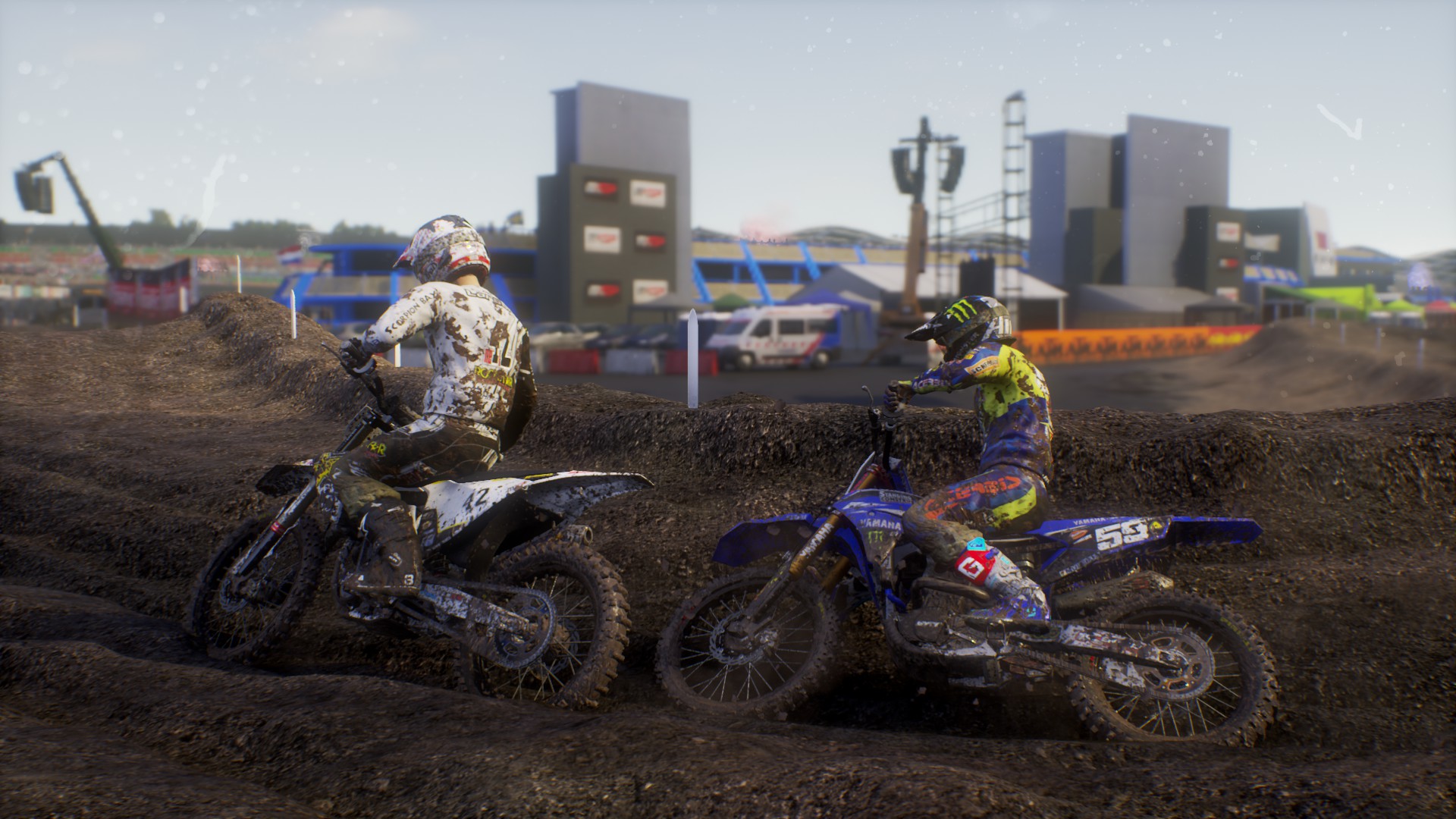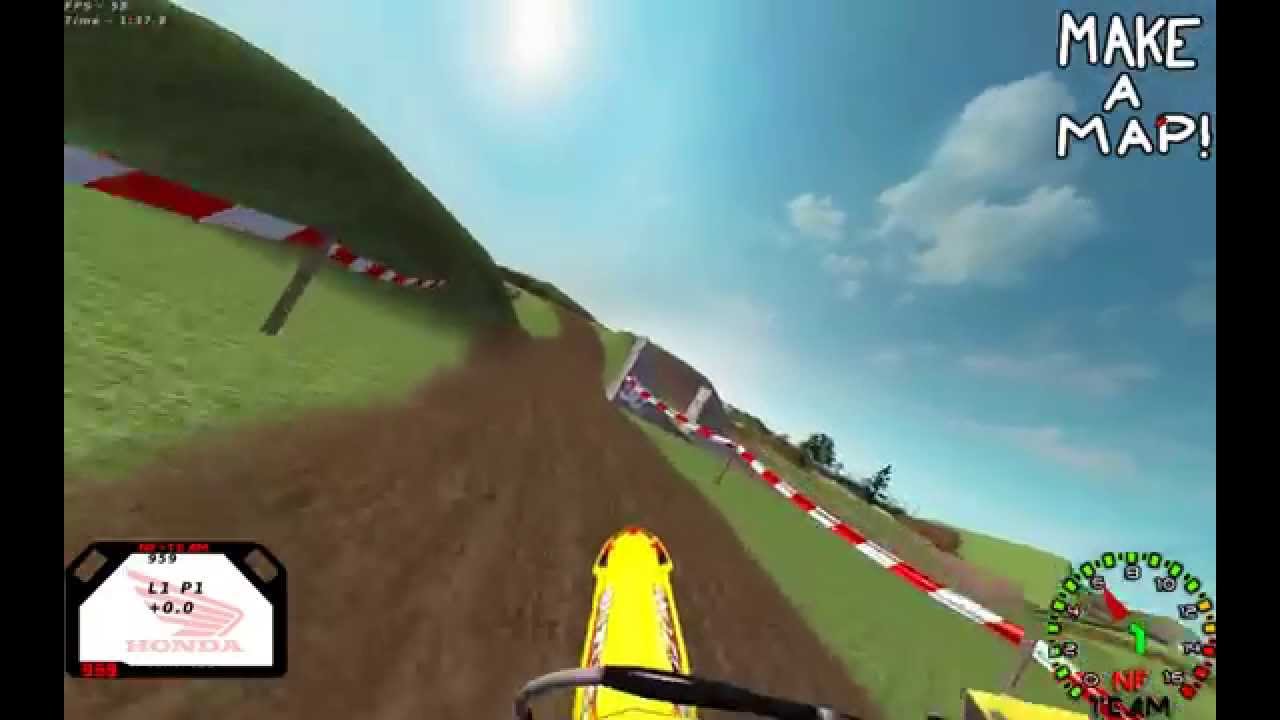TM Factory-Racing - MX Simulator Team. MXSim community released replica series + custom tracks emphasizing the USA scene - unzip files to your mxs personal folder. MX Simulator - Track Walk Ep. 65 - James Stewart Compound 2015 - Duration: 15:25. Start Your Systems 112,316 views. MX Simulator - Online Play Ep. 17 - High Speeds, Good Times - Duration. MX Simulator – 2019 Gotland Grand National Enduro – Track Walk Ep. 182 We’re back this week with another edition of Track Walk where we take a look at the Gotland Grand Nationals in MX Simulator.

Files you need to make tracks
You need the mx.exe from the full version of the game.Here's a blank track to start with: blank_track.zip
Unzip the blank track in '%LOCALAPPDATA%MX Simulator'.

The easy way to find this folder is by using the start menu itemcalled 'MX Simulator Personal Folder', which will open the folder inan explorer window.
Depending on your OS, this could be several different places.
- Vista: C:Users<username>AppDataLocalMX Simulator
- Windows XP: C:Documents and Settings<username>Local SettingsApplication DataMX Simulator
- Windows 2000 C:Documents and Settings<username>Application DataMX Simulator
Where <username> is your username.

You want thedirectory structure to be something like this:
You can now edit 'terrain.png' and 'shading.ppm' with your favoriteimage editing software and it should show up in the game.
MX Simulator Track Structure
Mx Simulator Enduro
Here's a short description of what each file does:
- blank/billboards
- Text file that places the sprites (currently used for spectators and most of the trees).
- blank/timing_gates
- Text file that sets the starting gate positions and timing checkpoints.
- blank/terrain.hf
- Text file that defines the height field size and resolution. Theformat is '[dimension] [resolution] [lowest point] [highestpoint]'. For example, a height field that is 1025x1025, with 2 feetbetween each point, with a low point of 0 and a high point of 500,would be defined like this: '9 2.0 0.0 500.0'.
- blank/terrain.png
- Greyscale png file that defines the heights. It should be square,and the size should match the size in 'terrain.hf'. For example, ifthe dimension in 'terrain.hf' is 9, you would use1025x1025 (29+1+1=1025).
- blank/shading.ppm
- RGB pnm image for shading the track.
- blank/statues
- Text file that places the stationary models.
- blank/flaggers
- Text file that places the flaggers.
- blank/lighting
- Text file that defines the light color and position.
- blank/map.png
- RGBA png file. This is the map in the top right.
- blank/texturelist
- This defines the different types of ground.
- blank/tilemap
- This is a raw array of bytes that defines what types ofground go where. The size is 2 to the power of the dimension in'terrain.hf'. For example, if the dimension is 9, it would be512x512 (29=512).
- blank/desc
- Text file that has the long name for the track.
The text files all have unix style line endings.
Built-in Track Editor
Enabling the Track Editor
To enable the track editor, you must add '--editor' to the commandline when you start 'mx.exe'. Either add it to the shortcut or juststart it from a command prompt - 'c:Program FilesMXSimulator> mx.exe --editor'. Once it's started, hit TAB until you getto the editor screen.
Track Editor Basics
Yeah, it's ugly.
To scroll the map, right click and drag, or use the arrow keys.Most other actions are done with the left mouse button.
The other keys are:
| = - | Zoom in and out |
|---|---|
| [ ] | Adjust brush strength |
| BACKSPACE | Undo |
| DEL | Delete (in Billboard and Statue mode) |
| TAB | Switch back to game mode |
| d | Duplicate (Statue mode only) |
| f | Flatten gradient |
| p | Export a .pov file |
| s | Save |
| u | Update Back Buffer |

Step by Step - Making a jump
Load up MX Simulator with the blank track.
Click on 'Gradient Placement', then drag the gradient endpoints towhere you want the jump.
Click on 'Gradient Edit', a 2d side view of the ground will appear(it should be totally flat). The black grid lines are at 10 footintervals and the gray ones are at 2.5 feet. Add points by clickingon the side view until you have a jump.
Now you have a gradient defined, but the track is still unchanged.To actually modify the track, click on 'Gradient Linear Paint', andthen paint your jump onto the track (you will probably want toincrease Focus to at least .5 first). When you're done, hit 'u' toupdate the back buffer.
You can take a look at it now in the game. It might look blocky atfirst from a distance, that will fix itself after a minute or so whenthe tesselation map updates.
Making a berm
Mx Simulator Enduro
Click on 'Gradient Placement', then move the center of the gradientto the center of the turn. Move the endpoint of the gradient outsideof where you want the berm.
Click on 'Gradient Edit'. Flatten the gradient by pressing 'f'.Add a point that lines up with the peak of the berm.
Add another point in the middle of the berm.
Finally, add a point at the bottom of the berm.
Convert the bottommost line segment to a curve.
Now you have the gradient set up to make the berm. Now switch to'Gradient Radial Add' mode, set 'Focus' to 0 and zoom back enough that thebrush covers the whole berm.
One click should be all it takes to paint in the berm.
Other Editing Modes
- Raise
- This mode raises the ground by 'strength' feet when you draw on it.
- Lower
- This mode lowers the ground by 'strength' feet when you draw on it.
- Smooth
- This mode blurs the ground by 'strength' feet when you draw on it.
- Smudge
- This mode blurs the ground by 'strength' feet in the direction youmove the mouse when you draw on it.
- Snap
- This mode snaps the ground to a lower level of detail depending on'strength'. You can use this mode to optimize a track's polygon count.
- Gradient Linear Paint
- This mode assigns the values from the gradient to the track as youdraw. They are assigned along the line the gradient was defined on.
- Gradient Linear Add
- This mode adds the values from the gradient to the track as youdraw. They are assigned along the line the gradient was defined on.
- Gradient Radial Paint
- This mode assigns the values from the gradient to the track as youdraw. They are assigned radially around the origin the gradient wasdefined on.
- Gradient Radial Add
- This mode adds the values from the gradient to the track as youdraw. They are assigned radially around the origin the gradient wasdefined on.
- Gradient Placement
- Places the gradient.
- Gradient Edit
- Edits the gradient.
- Timing Gate
- Places timing checkpoints.
- Billboards
- Places billboards.
- Statues
- Places statues.
To be continued...
Send questions and comments to feedback@mxsimulator.com
Copyright © 2007 by Josh Vanderhoof
All rights reserved.
Latest News
September 9, 2020:Bobby Deselle scored his first 450 national win at the final round of the2020Ride365.comNationals.Deselle battled Jack Haley down to the last lap for the moto 1 win andtook second in moto 2 for the overall win. Atom Holm took second witha 3-1, and Luke Magnetti went 9-3 for third overall.
Congratulations to 2020 champion Alexis Leclair!
| 2020 Nationals Final Points | ||
|---|---|---|
| 1. | Alexis Leclair | 486 |
| 2. | Jack Haley | 418 |
| 3. | Atom Holm | 407 |
| 4. | Chase Blakely | 279 |
| 5. | Walter Gebhardt | 270 |
Results and points atRace Factory Gaming.
Live stream archive at theStart Your Systems.
About MX Simulator
MX Simulator features the ultimate in motocross gaming physics.Unlike most other MX games, you actually lean into turns and throttle,clutch and shift like on a real bike. Real life actions such aswheelies, endoes, whips, swaps, slides and high-sides happen naturallyfrom the physics of the game in real time, without the use of cannedmotion capture effects. This game actually feels like riding.
Features
- Complete motorcycle physics model. Steering, suspension, clutch,transmission and power curve work just like a real bike.
- Online multiplayer with automatic prediction to compensate forlag.
- 8 different bikes based on real life dyno, gear ratio andweight information.
- Intelligent computer riders. The computer riders in this game donot cheat. They obey the same physical rules and use the same exactbike as the player does.
- Fully adjustable suspension and gearing.
- Physically modeled engine noise for both 2 smokes and thumpers.
- 12 event points series with novice, amateur and expert classes.Realistic tracks including Budds Creek and RedBud replicas.
- Flexible race format. Motos can be time or lap based with up to40 riders.
- No monster trucks.
- Requires 2 GHz CPU with 1 GB RAM and 3D graphics acceleratorwith full OpenGL 1.1 support. Works on either Windows (XP or newer)or Linux.
Send questions and comments to feedback@mxsimulator.com
Copyright © 2007 by Josh Vanderhoof
All rights reserved.